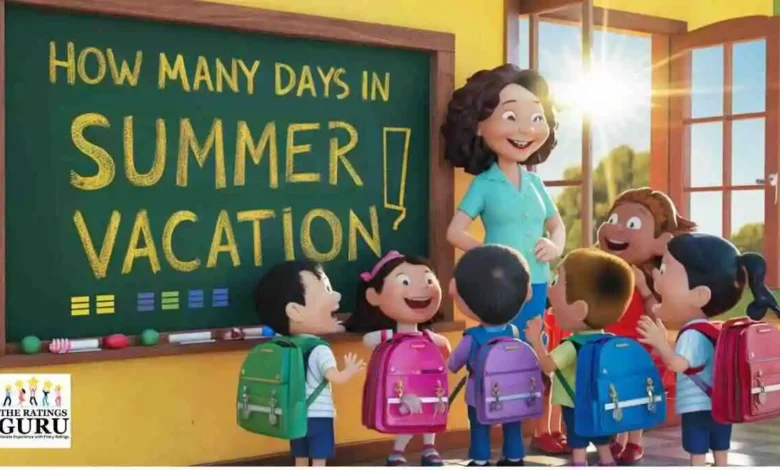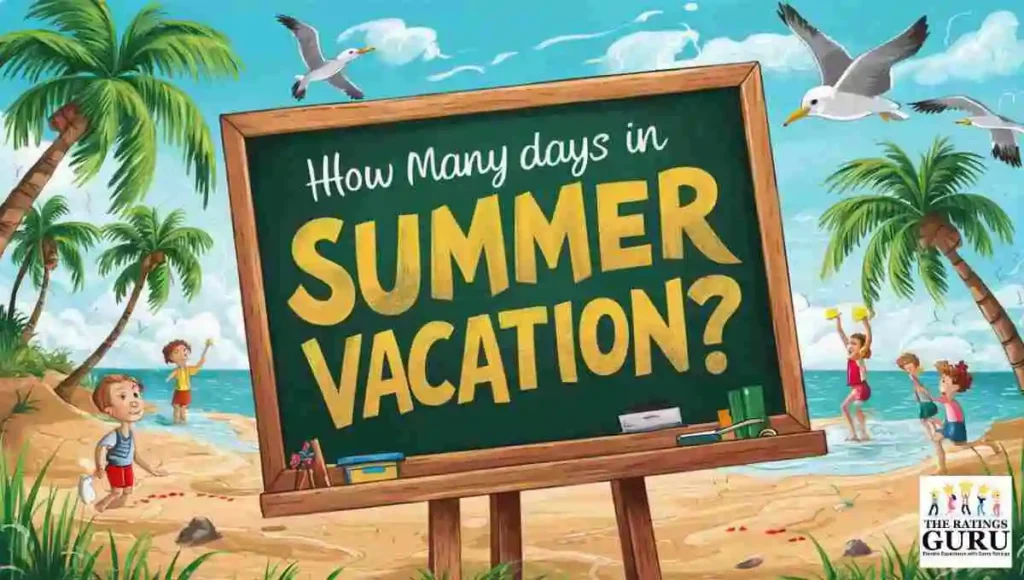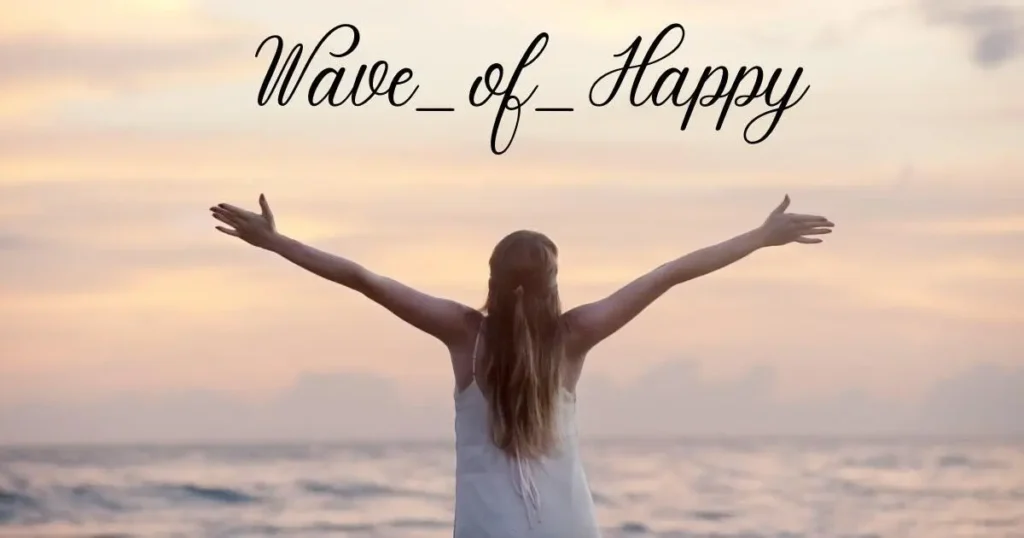How Many Days in Summer Vacation?: unlocking A Time for student and teacher

How Many Days in Summer Vacation?: Summer vacation is a cherished time for students and families worldwide. It’s a break from the academic routine, a time to recharge, and an opportunity to explore new experiences. But how many days should summer vacation last? This question doesn’t have a one-size-fits-all answer as the length of summer vacation varies significantly depending on geographic location, educational systems, and cultural norms. In this blog, we’ll delve into these variations, explore the typical lengths of summer vacation in various regions, and discuss the impact of vacation length on students.
Typical Length of How Many Days in Summer Vacation?

The length of summer vacation varies significantly across different regions and educational systems. Generally, summer vacations range from 8 to 12 weeks, but this can differ based on cultural, climatic, and policy factors.
- United States: In the U.S., summer vacation lengths can vary significantly by state and school district. However, on average, students typically enjoy a summer break of about 10 to 12 weeks. States like New York and California often have vacations starting in late June and ending in early September.
- Canada: Canadian students also experience variations in summer vacation lengths depending on the province. Generally, summer vacation lasts about 8 to 10 weeks, with students typically finishing the school year in late June and returning in early September.
- Western Europe: Countries such as Germany, France, and the UK usually have summer vacations that last approximately 6 to 8 weeks. For example, in Germany, summer breaks can vary by state but typically last about six weeks. In the UK, the summer holiday usually spans about six weeks as well, from late July to early September.
- Southern Europe: Southern European countries like Spain and Greece tend to have longer summer vacations, often around 8 to 10 weeks. These longer breaks align with cultural norms and the region’s hot summer climate, which makes it practical to have extended holidays during the hottest months.
- East Asia: In countries such as China, Japan, and South Korea, summer vacations are generally shorter, lasting about 4 to 6 weeks. For instance, Japanese students typically have summer breaks from late July to early September, with various school activities often scheduled during the break.
- Southeast Asia: In Southeast Asian countries like Thailand and the Philippines, summer vacation lengths can be longer, ranging from 8 to 12 weeks. The timing of these breaks often aligns with the region’s hot and rainy seasons, providing a practical respite from the weather.
- Australia and New Zealand: The Southern Hemisphere experiences summer during what is winter in the Northern Hemisphere. In Australia and New Zealand, summer vacations usually last about 6 to 8 weeks, spanning December and January, which coincide with the end of the academic year and the start of the new one.
- Africa and South America: Summer vacation lengths in Africa and South America vary by country, typically ranging from 6 to 10 weeks. These variations often depend on the local climate and cultural practices.
- Other Regions: In Australia and New Zealand, summer vacation coincides with the Christmas holiday and lasts about 6 to 8 weeks, from mid-December to late January or early February.
- Italy: Italian students enjoy one of the longest summer breaks in Europe, lasting up to 13 weeks. This long vacation is deeply rooted in the cultural value placed on family time and relaxation. However, it also poses challenges in terms of learning retention.
Why it’s important for teachers and student to know
Understanding the impact of summer vacation length is important for both teachers and students for several reasons:
For Teachers:
- Early Intervention: Teachers can prepare strategies to mitigate the effects of summer learning loss by planning review sessions and refreshers at the start of the school year.
- Data-Driven Planning: Knowing about potential learning loss helps teachers use data to identify which students might need additional support or intervention.
- Effective Pacing: Awareness of the summer break duration helps in pacing the curriculum appropriately, ensuring that critical topics are covered before the vacation.
- Remediation Plans: Teachers can develop plans for remedial activities to help students catch up after the break.
- Connecting Experiences: Teachers can design activities that connect students’ summer experiences with classroom learning, making lessons more engaging and relevant.
- Building Community: Facilitating discussions about summer experiences helps rebuild classroom community and relationships among students.
- Guidance and Resources: Teachers can provide parents with resources and suggestions for educational activities during the summer to maintain student engagement.
For Students:
- Preparation for the Next Grade: Knowing the importance of staying engaged during summer can motivate students to participate in educational activities, reducing learning loss and preparing them for the next academic year.
- Self-Directed Learning: Students can take ownership of their learning by engaging in self-directed educational activities, reading, and projects.
- Avoiding Regression: Understanding the impact of summer break helps students realize the importance of maintaining their academic skills, which can prevent regression in subjects like math and reading.
- Building Relationships: Students can stay connected with peers through summer activities, which helps in maintaining social bonds and easing the transition back to school.
- Mental Well-being: Knowing the benefits of a balanced summer can help students find a healthy mix of rest, play, and educational activities, contributing to their overall well-being.
- Exploring Interests: Summer provides an opportunity for students to explore new interests and hobbies, which can enhance their personal development and broaden their horizons.
Shared Benefits:
- Goal Setting: Both teachers and students can set realistic goals for the summer, ensuring that learning continues in a manageable and enjoyable way.
- Planning Activities: Understanding the importance of summer learning helps in planning structured activities that are both fun and educational.
- Collaborative Efforts: Teachers, students, and parents can work together to create a supportive environment that encourages continuous learning and development during the summer break.
- Encouraging Curiosity: Recognizing the value of summer activities in promoting curiosity and a love for learning helps in fostering lifelong learning habits among students.
Factors Affecting the Length of Summer Vacation
Several factors influence the duration of summer vacations:
- Educational System and Calendar Structure: The structure of the academic year plays a significant role. Some systems operate on a traditional calendar with a long summer break, while others use a year-round schedule with shorter, more frequent breaks.
- Cultural and Societal Norms: Cultural attitudes toward education and family time greatly impact vacation length. In some cultures, long breaks are seen as essential for family bonding and personal development.
- Climate and Weather Considerations: In regions with extreme weather conditions, the school calendar is often adjusted to ensure that students are not attending school during the hottest or coldest months.
- Economic Factors: The economic landscape of a country can influence summer vacation length. For example, in agrarian societies, longer breaks may be necessary for children to assist with farming activities.
- Government and Policy Decisions: National and local governments set educational policies that dictate the school calendar, including the length of summer vacations.
Pros and Cons of Long Summer Vacations
While long summer vacations are cherished by many, they come with both benefits and drawbacks.
Benefits:
- Rest and Recuperation: Students and teachers benefit from a prolonged period of rest, which can help prevent burnout and improve overall well-being.
- Family Time and Travel: Extended breaks provide families with the opportunity to spend quality time together and travel, which can be enriching and educational.
- Summer Camps and Extracurricular Activities: Long vacations allow students to participate in summer camps, internships, and other activities that can enhance their social and practical skills.
- Pursuit of Hobbies and Interests: Students have the time to explore their passions and interests outside the academic environment.
Drawbacks:
- Learning Loss: One of the significant concerns with long summer vacations is the “summer slide,” where students forget some of what they learned during the school year. This can lead to a slow start in the new academic year.
- Childcare Challenges: For working parents, long breaks can pose challenges in finding affordable and reliable childcare.
- Inconsistencies in Educational Attainment: Prolonged breaks can widen the achievement gap between students from different socio-economic backgrounds, as not all families can afford enriching summer activities.
- Economic Impacts on Lower-Income Families: Families with limited financial resources may struggle to provide their children with enriching experiences during the summer, leading to disparities in learning and development.
Impact of Summer Vacation Length on Students
The length of summer vacation can have various impacts on students, influencing factors such as academic performance, social development, and overall well-being. Here are some key points regarding the impact of summer vacation length on students:
Academic Retention: A longer summer vacation may lead to a phenomenon known as “summer learning loss,” where students experience a decline in academic skills and knowledge during the break from school. Shorter breaks or participation in summer learning programs can help mitigate this effect.
Achievement Disparities: Summer vacation length can exacerbate educational inequalities, as students from low-income families may have fewer opportunities for enrichment activities or access to educational resources during the break, widening the achievement gap between socioeconomic groups.
Socialization and Relationships: Summer vacation provides students with valuable time to socialize with peers, develop friendships, and engage in recreational activities outside of the academic setting. A longer vacation period allows for more extended opportunities for social interaction and relationship-building.
Family Time and Bonding: Extended summer vacations offer students the chance to spend quality time with family members, strengthening familial bonds and providing opportunities for shared experiences and activities.
Travel and Experiential Learning: Longer summer breaks enable families to plan vacations and trips, exposing students to new cultures, environments, and experiences. Travel can serve as a form of experiential learning, broadening students’ perspectives and enriching their education.
Work and Employment Opportunities: For older students, summer vacation may provide opportunities for part-time employment or internships, allowing them to gain valuable work experience, develop skills, and earn income to support their education or personal expenses.
Physical and Mental Well-being: A well-structured summer vacation, regardless of length, can contribute to students’ overall well-being by providing opportunities for relaxation, recreation, and pursuing personal interests or hobbies. However, excessively long breaks without structured activities may lead to boredom or lack of stimulation.
Economic Impact: For many working parents, summer vacation presents logistical and financial challenges. The cost of childcare or summer programs can be significant, and finding appropriate supervision for children during the long break can be difficult. Shorter or more evenly distributed breaks throughout the year could alleviate some of these pressures.
Alternatives to Traditional Summer Vacation
Recognizing the drawbacks of long summer breaks, some educational systems have explored alternative models:
- Year-Round Schooling: This model divides the academic year into shorter terms with breaks distributed throughout the year. For example, students might attend school for 9 weeks followed by a 3-week break. This approach aims to reduce learning loss and maintain consistent academic engagement.
- Extended School Year Programs: Some schools offer optional extended-year programs that provide additional instructional time during the summer. These programs can be particularly beneficial for students who need extra help or are at risk of falling behind.
- Enrichment and Remedial Summer Programs: Schools and community organizations often offer summer programs that focus on both enrichment and remediation. These programs can help bridge the gap for students who might otherwise experience summer learning loss.
Final thought of How Many Days in Summer Vacation?
The length of summer vacation varies widely around the world, influenced by educational systems, cultural norms, and economic factors. While extended summer vacations have many advantages, they also have significant disadvantages, mainly in terms of learning loss and childcare difficulties. Options like extended school year programs and year-round education offer viable ways to lessen these problems. striking the correct balance between one’s personal wants and educational requirements is critical. It will be interesting to observe how the duration and format of summer vacations change to accommodate the shifting demands of society and students as educational institutions continue to change.
FAQs for How Many Days in Summer Vacation?
Q: How Many Days in Summer Vacation?
A: In the United States, summer vacation typically lasts around 2 to 3 months, which is roughly 60 to 90 days.
Q: How Many Days in Summer Vacation in California
A: In California, summer vacation for students usually lasts around 2 to 3 months, which equates to approximately 60 to 90 days.
Q: How many days in summer vacation Phineas
A: In the TV show “Phineas and Ferb,” summer vacation lasts 104 days. This is highlighted in the theme song: “There’s 104 days of summer vacation, and school comes along just to end it.”
Q: Is there 104 days of summer vacation
A: Yes, in the animated TV show “Phineas and Ferb,” it is famously mentioned in the theme song that there are “104 days of summer vacation.”
Q: Is summer vacation the same length in all countries?
A: No, summer vacation lengths vary around the world.
Q: Do all schools in the same country have the same summer vacation length?
A: Not necessarily. The length of summer vacation can differ by state, region, or school district within the same country.
Q: How can I find out the exact length of my summer vacation?
A: You can find the exact length of your summer vacation by checking your school’s academic calendar or contacting your school administration.









